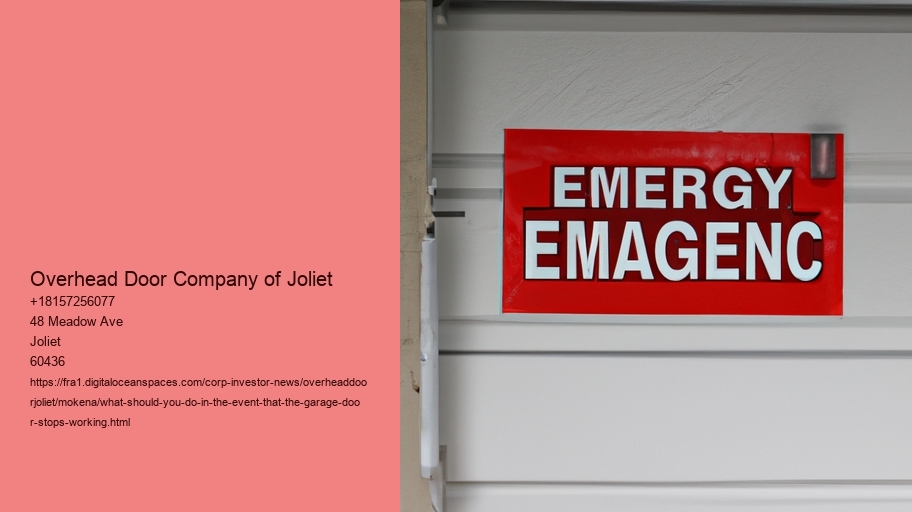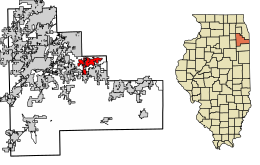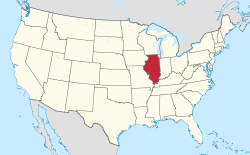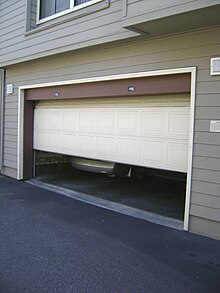Determine the Garage's Type Door and Opener
If garage doors suddenly stop working, it can be an unpleasant and frustrating experience.Whether you're rushing to work, or trying to pull your car in garage during a downpour and the door stops working, it's the last thing you need to face with.The first step in addressing this issue is to recognize the type of garage door and opener you are using, as this will significantly affect your approach to diagnosing and fixing. What do you do if the garage door stops functioning? .
Roll-up garage doors which are often used in commercial environments, are made from the slats, which are rolled into a coil.
Tilt-up doors on the contrary, are a single solid piece that is able to tilt out and up as it opens. Belt drive garage door openers are quieter, but they use an elastic band instead of a chain. They're a fantastic option for garages with attached garages. Screw-drive garage door openers employ a rod with a threaded steel for moving the garage door.
What should you do in the event that the garage door stops working? - Orland Square Mall
- Orland Square Mall
- height
- physical tool
The next thing to do is to examine the garage door opener and determine the model. Check the breaker and plug to make sure that the opener has power. Examine the manual release cable to make sure that it hasn't pulled. This could cause the door to be disconnected from the opener. Inspect the tracks and rollers of the door for damage or obstructions and remove any debris.
If needed, you should lubricate the moving parts. Lack of lubrication may cause them to become stuck or stick.Resetting your opener can resolve any electronic faults. Check the manual for the opener you're using to determine the precise steps. Certain openers can be reset with a push of the button, whereas others require that the unit be disconnected and then re-plugged.
Spring tension is high and it could be hazardous to repair them if you don't have the right tools.
When the garage door stops working it means that the
Examine for obstructions and debris
It's frustrating and confusing when your garage door doesn't work in a flash, especially if use it every day.
This simple, but efficient step can be used to pinpoint the issue and bring back the functionality of your garage.Even a small obstruction could prevent your garage door from functioning as it should.
Begin by examining the tracks on both sides of the door.Look for obvious obstructions, or the buildup of debris.If you spot anything odd, such as a twig or a stone stuck to the track, carefully remove it.
The issue may not always be obvious. To determine if the problem is still there, try running your hand along the track. Also, make sure that the tracks are aligned. Misalignment can also cause the door jam.The next step is to inspect the rollers and hinges.These components should be able to move without resistance.If they're squeaky or stuck, it could be a sign of the accumulation of dirt or rust.In situations like this cleaning them and applying lubrication will usually resolve the issue.Use a soft brush or cloth to clean any debris, then apply a suitable lubricant in order to ensure a smooth and easy movement.
It's also vital to look over the area surrounding the door itself.Sometimes items stored inside the garage may accidentally move or fall, blocking the route of the door.Ensure that the area is free of obstructions and nothing is blocking the door's movements.
If, even after clearing any obvious obstructions, the door continues to refuse to open check the sensors.
Modern garage doors are fitted with safety sensors to prevent doors from closing if anything is detected within the path.Make sure the sensors are cleaned and properly aligned, as any dirt or misalignment may cause them to fail.If you keep your path clear and by avoiding obstacles, you will avoid having to contact a professional solve a problem which is usually easy to fix.
Examine the wall switch and remote control
It's crucial to examine the wall switch as well as the remote control.
These components are typically the cause of an unresponsive garage door, and performing a thorough check could save you time and possibly avoid unnecessary costs.First, consider the remote control.This handheld device is your primary tool for operating the garage door without direct physical interaction.Over time, remote controls can experience issues such as drained batteries, signal interference, or even internal damage.Start by replacing the batteries with new ones.It might seem simple, but dead batteries are a common reason for a garage door not responding.If the problem persists after replacing the batteries, try reprogramming the remote according to the manufacturer's instructions.Additionally, ensure that the remote is within the recommended range and that there are no obstructions blocking the signal.
Then, shift your focus to the wall switch, which is a important component of the garage door system.
The wall switch is connected to the garage door opener, and often provides a more reliable way for operation.Inspect the switch for indications of physical damage or wear.Sometimes loose wires, or faulty connections can make the switch malfunction.If you are comfortable doing this, make sure you open the switch's panel and examine any broken or disconnected wires.If you discover any issues it is possible to call an expert electrician to solve the issue.In certain instances, the remote control and wall switch might seem to be functioning however the door is unresponsive.This could indicate a problem with the garage door opener unit or with other components like the sensors or the door tracks.However it is best to start by utilizing the wall switch and remote control is a logical first step.
It lets you remove these common issues prior to moving on to more intricate troubleshooting techniques.This initial examination will save you time and provide confidence that you've followed the correct steps to identify the issue.
Test the door balance manually
It can be a hassle and a hassle when your garage door stops working. The garage door is a vital part of your home, since it offers security, protection against the elements, and ease of access to your car and storage space.
Manually testing the balance of the garage door can be a critical step to take when your door isn't working. This simple but powerful technique will allow you to identify any potential problems and prevent the possibility of further damage.The balance of a garage's door is crucial for its proper functioning.A well-balanced door ensures that the door opener won't have to perform more work than it has to, reducing the chance of wear and wear and tear on the motor, as well as other parts.An overbalanced door however, can lead to more important issues over time, for instance, misalignment or broken springs or a complete system failure.Therefore conducting a test of the door's balance is a crucial diagnostic step that can help determine if the problem is with the door or the opener mechanism.
To check the door's balance, you must first disconnect the garage door opener.
Most garage doors are equipped with a release mechanism that is located on the handle or red cord. When the door has been disconnected from the motor, you can lift it up to waist level and then let it go. A well-balanced door will remain in place and move at a slow pace.If you notice that your door isn't properly balanced it is vital to address the issue promptly.Door balance issues are usually due to the tension of the springs. It can be dangerous to adjust on your own due to the high tension they're under.It is advised to get help from a professional to adjust the springs to ensure that the door is balanced correctly.Doing this does not just solve the immediate problem but also improves the durability and longevity of your garage door's mechanism.
In conclusion, manually checking the door balance is an important first step to take when your garage door suddenly stops functioning.
This procedure helps to determine the source of the issue, whether it is the door's balance, or in another place in the system.By knowing the importance of balancing your door and addressing any issues promptly it will prevent further damage and ensure your garage door is operating in a safe and efficient manner for long time to be.Tracks and Rollers
This quick check can help you save money and time if your garage door is not working.
The rollers and tracks are the key components of the garage door's operation system.The tracks are the steel rails that direct the door's opening and closes, while the rollers are small wheels which move along the tracks.
These parts are prone to get worn out, dirty or even misaligned with time. This can lead to malfunctions.Start by looking at the tracks for obstructions.Dust or grime and even small debris can accumulate within the tracks, causing the rollers to struggle when they travel across the path.Cleaning the tracks with a damp cloth is often enough to resolve these issues.Make sure that you dry them thoroughly afterward to avoid rust.
The next thing to do is to verify the alignment of the tracks. Tracks should be straight and parallel. If they appear bent or out of alignment the door may jam. It is possible to press the wrongly aligned section back to its proper position using an instrument made of rubber. However, if there is a lot of damage, it's better to call an expert who can align the tracks correctly.
Rollers can become worn out over time. This is especially true in the case of plastic.
Find evidence of wear and tear, such as cracks or chips.If the rollers seem damaged, you should consider changing them out with brand new ones.Metal rollers with ball bearings tend to offer better durability and a smoother operation.In addition, lubrication plays an vital role in maintaining smooth operation of the tracks and rollers.Applying an lubricant based on silicone can lessen friction and help prevent wear.Make sure that you grease all moving parts, which includes the hinges and springs, to make sure that your garage door is operating effectively.
By ensuring that these components are properly aligned and lubricated It is possible to bring back the garage door's full function.
Maintaining and inspecting these components will help prevent any malfunctions from occurring in the future.What should you do in the event that the garage door stops working? - physical tool
- Chicago metropolitan area
- property tax
- push-button
Be on the lookout for visible damage or wear
If garage doors stop working, it's very frustrating and aggravating especially if you're going out or trying to ensure your home is secure for evening.While there are a myriad of reasons behind the issue, one of the most immediate and practical steps to take is to check for any visible damage or wear.This first inspection will usually uncover the cause of the issue, which allows an immediate and effective solution.
What should you do in the event that the garage door stops working? - physical tool
- Flossmoor
- belt
- Sears
Garage doors are a complex system composed of numerous parts, such as springs, cables as well as rollers and tracks, each of which plays vital roles in the seamless operation.Over time, these components will wear out due to regular usage and exposure to environmental elements.
Through a thorough visual exam, you can spot any obvious indications of damage creating problems for the door.Begin your inspection by examining springs. They are the ones responsible for lifting and lower the door. Find evidence of wear or rust. A worn spring could make the door unusable, which is why it's essential to fix the issue immediately. In the next step, inspect the cables for fraying and broken strands.
Another important area to pay attention to is the door itself.Look for any obvious bents, dents, or warping that might affect its stability and alignment.Pay careful attention to the weather stripping on the bottom of the door, since damaged strips can prevent the door from sealing properly.
In addition, ensure that the door's sensors are clear and aligned, since misalignment, dirt or dirt can interfere with their functions and make the door stop working.A visual inspection can be beneficial, but it's important to keep in mind that not all problems are immediately apparent. If you don't find any obvious signs of wear or damage you might need to speak an expert to identify the problem.
In summary, when faced with an unusable garage door, looking at the visible signs of wear and tear is the initial step.This technique not only aids to identify the issue fast but also enables you to take the necessary action in order to return the door to normal operation.
You can extend the life of your garage door by taking a proactive approach.Check the Springs and Cables
It can be frustrating to find your garage door not working. It is important to check the springs as well as the cables. These are the essential components for the functioning of your garage and are the primary reason for malfunctioning garage doors.
The springs play an essential role in the operation and smoothness of your garage through counterbalancing the load. There are two primary types of springs, extension and torsion. Torsion springs are positioned above the garage and then twist in order to store energy. Extension springs on the other hand are installed on to either side of the door and extend to create the force needed.
These springs can be worn out with time break or loose tension causing operational problems.Similarly, cables are essential because they work with the springs in order to raise and lower the door.They are typically made of steel and designed to withstand a lot of tension.However they may suffer due to wear and tear, fray or snap due to the enormous pressure they're under.A broken cable could cause the door to become unbalanced or become completely inoperative.
If you're unsure if the cables or springs need to be adjusted, take a look and look them over. Look for signs of wear or rust.
It is essential to be safe when dealing with garage door parts.
Cables and springs are under pressure and could result in serious injury if mishandled.If you're not experienced in garage door repairs, you should to consult an experienced technician.They have the right tools and expertise to properly fix or replace these components and ensure that your garage door operates properly and safe.In conclusion, when your garage door suddenly stops working, assessing the springs and cables is a key step in diagnosing the problem.Understanding their role and potential issues can help you determine whether a simple adjustment is needed or if professional intervention is required.Taking prompt action not only restores functionality but also ensures the safety and longevity of your garage door system.
You should contact a professional Technician
Your garage door can suddenly stop working, causing you to lose time. It could make your home vulnerable.
While it might be tempting to pull out an instrument and try a do-it-yourself fix The most sensible approach is to call a professional technician.This decision not only ensures your safety, but also guarantees an effective and long-lasting solution to the issue.Garage doors are complex systems composed of various components such as springs, cables, tracks, and electronic parts.Each of these elements plays a crucial role in the door's operation, and a malfunction in any part can cause the entire system to fail.Without proper knowledge and experience, attempting to fix these issues can be dangerous.For instance, garage door springs are under high tension and can cause severe injury if handled improperly.Professional technicians are trained to deal with these risks safely, using the right tools and techniques to handle repairs.
A skilled technician adds a degree of competence and knowledge to the table which a layperson doesn't possess.
They can quickly diagnose the issue and identify whether it's a minor problem, like a misaligned track, or something more serious, like a broken spring.This expertise not only saves you time but also prevents the potential for further damage that can occur with incorrect handling.Professionals also have access to high-quality parts and can ensure that replacements match the specifications of your existing garage door system, leading to better functionality and longevity.A skilled technician can save money in the long term. While the DIY method may appear to be less costly initially however, it could lead to more costly and extensive repairs later on.
Many technicians offer warranties on their work. This provides confidence that in the event something goes wrong, your issue will be guaranteed.Contacting a professional can save you time and money. If you are trying to learn the mechanisms behind garage doors, buying the correct tools and perform repairs can take several hours or even days. A technician can solve the problem quickly and allow you to return to your regular routine.
In the end, although the desire to repair your garage door on your own may be strong, calling an expert technician is the most secure option, the most efficient, and ultimately, the best option.Their skills, experience, access to quality parts, and their ability to make quick and precise repair work will make sure that your garage door is up and running again, protecting both your home and


















